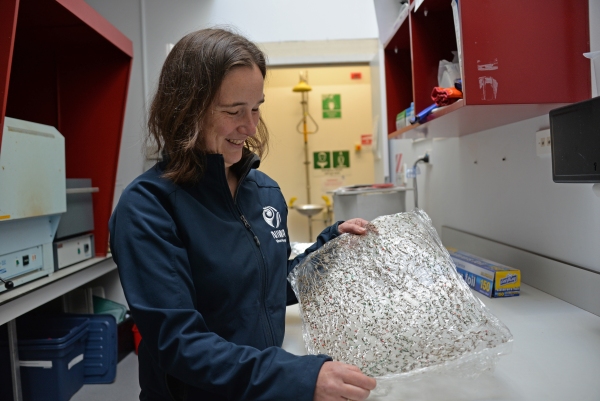Most New Zealand cities and towns have switched over to modern Light-Emitting Diode (LED) street lighting, which provides improved illumination at lower operational cost.
However, little is known about the potential for adverse ecological impact the conversion to largely blue-white LED streetlights may have, as insects are commonly attracted to short wave-length light, including blue light.
As part of a four-year Ministry of Business Innovation and Employment-funded Smart Idea project, NIWA freshwater ecologist Michelle Greenwood led a group of researchers during an investigation of the impact of LED lighting on flying freshwater insects, an integral component of all waterways.
They did this primarily by assessing the influence conversion of traditional streetlights to LEDs had on the rates of attraction of flying freshwater insects to streetlights.
They also adapted a method for visualising city-scale streetlighting to quantify spatial patterns in lighting across Ōtautahi - Christchurch.
Several small-scale experiments and assessment of the relationship between distance and light attraction was undertaken by Jessica Schofield as part of her master's degree research at the University of Canterbury.
By mapping city "lightscapes" and investigating changes in the behaviour of adult insects under different lighting scenarios, this research aimed to provide information that could assist in the design of ecologically sensitive streetlighting plans, and help identify critical areas where alternative lighting solutions might be required.
The researchers conducted three experiments capturing insects flying around different types of lights near waterways to understand if selecting specific LED streetlights can reduce insect attraction. The experiments were designed to answer three key questions:
Does switching from yellow-coloured high-pressure sodium (HPS, 70 Watt) to blue-white 4000 K LED (20 Watt) streetlights increase attraction of insects to streetlights?
Does reducing the "colour temperature" (amount of blue light emitted) of LEDs by switching from blue-white to yellow LEDs reduce insect attraction?
Up to what distance from rivers are flying freshwater insects attracted to lights?
Research findings
The city-scale lightscape mapping allowed visualisation of light and dark areas across Ōtautahi under different streetlighting scenarios.
It showed that both streetlight intensity and colour spectrum influenced attraction rates.
The conversion from HPS streetlights to 4000 K LED generally reduced insect attraction, contrary to initial expectations, given that the LEDs emit a higher proportion of blue light than the HPS. However, the LED streetlights were commonly dimmer than the HPS lights.
Caddisfly taxa were attracted to blue-white LEDs that emitted more blue light both in small-scale and operational streetlight-scale experiments. This effect was largely consistent across different caddisfly taxa as well as adjacent to rivers both in light- naïve areas (Arthurs Pass National Park) and better lit urban areas. Although caddisflies were attracted to lights up to 100 metres from a river, a high proportion of individuals were captured within 20 metres from the river.
Overall, operational scale streetlight experiments showed that many, but not all, flying insect taxa were more attracted to blue-white LEDs that emitted more blue light (a lower colour temperature), or to those that emitted no blue light (yellow LED), than the commonly installed 4000 K LED streetlights.
Conclusion
Using lights that emit less blue light is likely to benefit certain groups of insects (particularly moths and caddisflies), with the magnitude of effect dependent on the insect taxa, relative light intensity, and colour spectrum of the lamps being replaced. Placing lights further from waterways or behind screens such as riparian plants, where possible, will also likely reduce the attraction of freshwater insects to streetlights.
To read the full project research findings: Investigating ecological impacts on freshwater insects from LED streetlight conversions | NIWA


